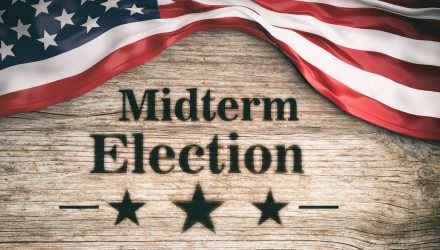By Sean Clark, Clark Capital Management Group
The midterm elections are over, and after a difficult October and volatile start to November, we now hope to have a bit less uncertainty in the markets. In this Market Update, we’ll explore what we believe to be the key takeaways and implications of the election results.
Typically, the president’s party tends to lose Congressional elections during the midterms between presidential elections. And, in general, equity markets in the United States and elsewhere tend to quite like a divided government. If neither of the two big parties is fully in control, the government typically lacks the ability to implement big changes unilaterally.
A Democratic House, the first since 2010, leaves the administration without congressional support to advance much of the President’s agenda, including another round of tax cuts, funding for a border wall and attempts to repeal Obamacare.
Wednesday’s huge market rally surprised many, given the presumptive setback to the President’s agenda as a result of the vote. However, the positive reaction suggests markets had priced in some risk of a larger “Blue Wave” that didn’t fully materialize. The market reacted to the vote with the biggest post-midterm day rally since 1982 and 4th largest since 1930!
Let’s take a look at some of the policy implications of this week’s midterm election results.
1. Trade Policy
With Trump’s legislative agenda hinders with a divided Congress, trade policy remains one of the few levers President Trump will be able to pull, as the Executive Branch has unilateral authority over trade. It probably means no change in trade policy as Trump candidates did well in farming districts that have benefitted by tariffs. In fact, Trade is a political winner for the administration and many Democrats are strange bedfellows with Trump on trade. Some risks do exist with trade policy, including NAFTA 2.0, which needs to be ratified by Congress. The President could get more aggressive with trade, especially with China, as it plays well to his base.
2. Immigration Policy
A democratic House leaves funding the border wall a problem for the administration. It also provides the potential for a DACA agreement, since both parties favor an agreement and Trump previously proposed a DACA fix. This could be an area of compromise.
3. Fiscal Policy and the Federal Budget Deficit
It’s possible that President Trump may be willing to work with Democrats on an infrastructure bill, but the current political climate may make that difficult, especially since there is little consensus on how such a bill would be funded. Democrats could use their newfound legislative leverage to force Republicans to roll back some of the recent tax legislation in exchange for their votes on raising the debt ceiling or approving the revised North American Free Trade Agreement. The net effect is likely less fiscal stimulus moving forward as the benefit of tax cuts fade and spending levels revert back to pre-2018 levels.
4. Drug Price Legislation
Lowering drug prices has been seen as one of the few areas where President Trump and House Democrats may be willing to work together. The administration has proposed interesting ideas, such as approving more generic drugs, tying the price America pays for drugs to an international pricing index, and requiring disclosure of drug costs on direct-to-consumer advertisements. Pelosi, the presumed Speaker, has indicated that lowering drug prices will be an early priority, but has not provided any specifics. So on this issue there may be some common ground to make progress.
5. General Market Volatility
Volatility is likely to persist even though the uncertainty of the midterms is behind us, as the headwinds of trade tensions with China and the potential for a policy mistake still exist. If there is an increased focus on investigations of the President and the administration, it will likely result in an even more partisan and polarized environment, and that could lead to increased market volatility. We did say coming into the year that we expected an increase in volatility and this just validates those comments. We are likely to see economic growth slow and global central banks will begin balance sheet reductions over time, which will elevate volatility.
Implications for Investors
What does a split Congress mean for the markets and investors? There will likely be more investigations and more volatility. Fed policy should remain along the same path, and many of the pro-growth policies will remain in place; however, it is unlikely that major legislation will get passed. Trade tensions will likely remain high and affect the markets due to the climate of uncertainty.
We will continue doing what has been successful. In fixed income, that means active management, capitalizing on the opportunities that the rising rate environment provides, and a focus on credit risk over duration risk where appropriate. In equities, we’ll continue to focus on finding high quality companies that are undervalued and experiencing improving business conditions.

